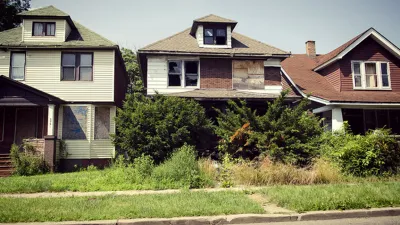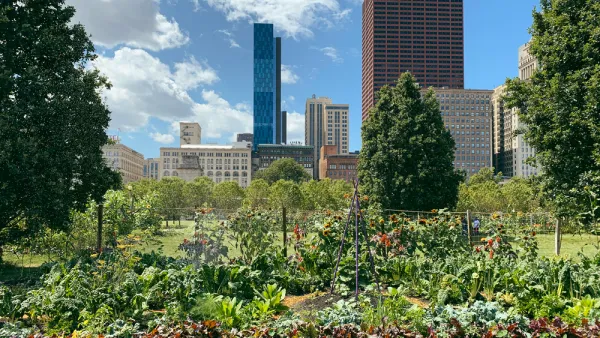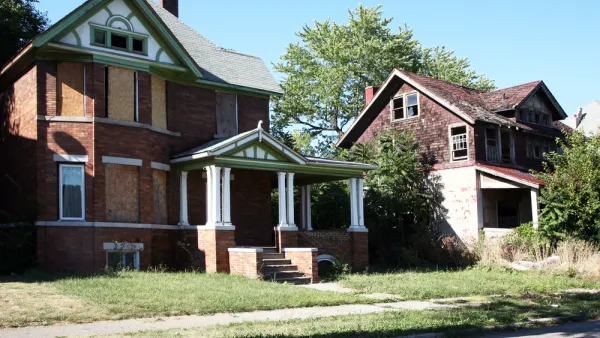Urban homesteading as a response to hypervacancy is in the news after South Bend Mayor Pete Buttigieg proposed the Douglass Plan while on the presidential campaign trail.

Joseph Schilling and Brian Bieretz write on the subject of vacant and abandoned properties, suggesting collaborative and comprehensive strategies to respond to a complex problem.
The problem’s scope and impact vary among cities and neighborhoods, depending on the relative strengths or weaknesses of the regional economy, local housing market, and local government capacity. In older industrial legacy cities, such as Baltimore and Detroit, hypervacancy creates a dynamic where some neighborhoods are undergoing gentrification while others nearby are plagued by blighted buildings and less economic opportunity.
The article is written in response to a policy announcement made by South Bend Mayor Pete Buttigieg, also a Democratic candidate for president, at the end of July, proposing a federal policy, called the Douglas Plan, resembling the urban homesteading popular during the 1970s.
Kriston Capps reported on Buttigieg's proposal in an earlier post for CityLab, describing the Douglass Plan as an attempt to bridge the racial wealth gap, prioritize environmental equity, and reform the criminal justice system. "Embedded within that plan is a housing proposal for the parts of America that are still reeling from the Great Recession, a plan that would promote homeownership by targeting hypervacancy," writes Capps.
Under the Buttigieg proposal, cities would bid for comprehensive financing under a new Homeownership Fund (operated by the U.S. Department of Housing and Urban Development). Pilot cities would establish a land bank to acquire and develop abandoned or foreclosed properties. A special-purpose trust (also administered by HUD) would purchase those properties and provide funds for restoring them. An eligible homesteader would then be granted the property to use as a primary residence—and after 10 years, the homesteader would own the property free and clear.
According to Schilling and Bieretz, however, homesteading only works for a portion of a city's vacant properties. "The plan would likely work best in middle neighborhoods [pdf] with modest property abandonment, some threshold market strength, and community-based organizations and capacities. The homes must also be in good physical condition, where it makes financial sense to rehabilitate them," according to the article.
To help ensure an effective strategy for vacant and abandoned properties, Schilling and Bieretz have created a list of five elements necessary to reclaim vacant properties and revitalize struggling neighborhoods:
- Comprehensive property data and information infrastructure.
- Resources for land banking.
- Strategic code enforcement.
- Public and private resources.
- Civic infrastructure and community stewardship.
FULL STORY: Five Elements Cities Need to Address "Hypervacancy" and Catalyze Neighborhood Recovery

Analysis: Cybertruck Fatality Rate Far Exceeds That of Ford Pinto
The Tesla Cybertruck was recalled seven times last year.

National Parks Layoffs Will Cause Communities to Lose Billions
Thousands of essential park workers were laid off this week, just before the busy spring break season.

Retro-silient?: America’s First “Eco-burb,” The Woodlands Turns 50
A master-planned community north of Houston offers lessons on green infrastructure and resilient design, but falls short of its founder’s lofty affordability and walkability goals.

Test News Post 1
This is a summary

Analysis: Cybertruck Fatality Rate Far Exceeds That of Ford Pinto
The Tesla Cybertruck was recalled seven times last year.

Test News Headline 46
Test for the image on the front page.
Urban Design for Planners 1: Software Tools
This six-course series explores essential urban design concepts using open source software and equips planners with the tools they need to participate fully in the urban design process.
Planning for Universal Design
Learn the tools for implementing Universal Design in planning regulations.
EMC Planning Group, Inc.
Planetizen
Planetizen
Mpact (formerly Rail~Volution)
Great Falls Development Authority, Inc.
HUDs Office of Policy Development and Research
NYU Wagner Graduate School of Public Service




























